Hasting autopsy - not the slam dunk rebuttal for those hoping to damp down conspiracy discussions on how and why Michael Hastings was murdered
http://whowhatwhy.com/2013/08/21/hastings-autopsy-traces-of-meth-found-in-body-but-crash-caused-death/
Video: Miranda’s lawyers intend to pursue legal action against the UK government.
 The despicable people who run the Caribbean prison are more than willing to allow their victims to kill themselves out of despair – or even to murder some of them and disguise the act as suicide. However, they will not countenance the act of self-slaughter if it is made as an assertion of self-ownership.
The despicable people who run the Caribbean prison are more than willing to allow their victims to kill themselves out of despair – or even to murder some of them and disguise the act as suicide. However, they will not countenance the act of self-slaughter if it is made as an assertion of self-ownership.
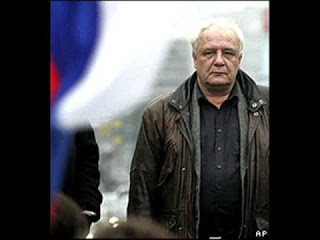 What Bukovsky described as a novel method is now standard operating procedure at Gitmo. In words saturated with pain, Bukovsky recounted that the effort to insert the feeding tube turned his nose into a bloody geyser, and wrenched tears from his eyes.
As was the case in the Soviet Union, operatives of the American Homeland Security State are drawn from a stygian talent pool in which sociopaths and sadists are common. The military personnel involved in torturing the Gitmo hunger-strikers must of necessity be the kind of people who revel in brutalizing innocent, helpless people. This is especially true of the depraved people who compose the Initial Reaction Forces (IRFs) – the SWAT-style squads used to carry out “Forcible Cell Extractions” (FCEs) of hunger strikers.
What Bukovsky described as a novel method is now standard operating procedure at Gitmo. In words saturated with pain, Bukovsky recounted that the effort to insert the feeding tube turned his nose into a bloody geyser, and wrenched tears from his eyes.
As was the case in the Soviet Union, operatives of the American Homeland Security State are drawn from a stygian talent pool in which sociopaths and sadists are common. The military personnel involved in torturing the Gitmo hunger-strikers must of necessity be the kind of people who revel in brutalizing innocent, helpless people. This is especially true of the depraved people who compose the Initial Reaction Forces (IRFs) – the SWAT-style squads used to carry out “Forcible Cell Extractions” (FCEs) of hunger strikers.
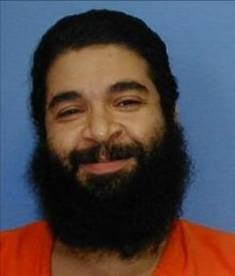 “They come into my cell, slam me on the floor, shackle me, haul me out of the cell, put a bottle of water on my bed, pull me back in, and cut the shackles off – with a few thwacks in between,” Aamer testifies in a report published by Reprieve. Frightened of the abuse he would experience if he sought to take a shower, Aamer has resorted to using toilet water to cleanse himself.
“They come into my cell, slam me on the floor, shackle me, haul me out of the cell, put a bottle of water on my bed, pull me back in, and cut the shackles off – with a few thwacks in between,” Aamer testifies in a report published by Reprieve. Frightened of the abuse he would experience if he sought to take a shower, Aamer has resorted to using toilet water to cleanse himself.
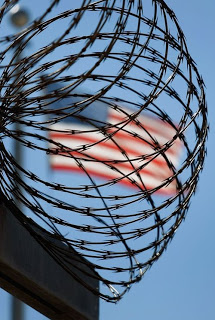 In reversing that ruling last year, a New York State appeals court recognized that the Taser is an implement that can be used to inflect “extreme pain … with little or no injury” and ruled that the use of a Taser to extract the DNA sample was “unreasonable” because the suspect “posed no immediate threat to the safety of himself or the officers.” What this means, of course, is that next time police decide to employ a Taser in an interrogation they will invoke the all-sufficient claim of “officer safety” to justify torturing the suspect.
In reversing that ruling last year, a New York State appeals court recognized that the Taser is an implement that can be used to inflect “extreme pain … with little or no injury” and ruled that the use of a Taser to extract the DNA sample was “unreasonable” because the suspect “posed no immediate threat to the safety of himself or the officers.” What this means, of course, is that next time police decide to employ a Taser in an interrogation they will invoke the all-sufficient claim of “officer safety” to justify torturing the suspect.

A secret court opinion from October 2011 that ruled the NSA's surveillance activities unconstitutional has finally been unveiled, thanks to a successful challenge by the EFF. (Big internet high five to the EFF by the way.) The document is heavily redacted, but as it hinges on the NSA's data collection methods, it offers interesting insight.
For example, a footnote on page five explains that the "NSA's 'upstream collection' of Internet communications includes the acquisition of entire 'transaction[s]' [redacted]," and that "such transactions may contain data that is wholly unrelated to the tasked selector, including the full content of discrete communications that are not to, from, or about the facility tasked for collection."
Read More...
http://whowhatwhy.com/2013/08/21/hastings-autopsy-traces-of-meth-found-in-body-but-crash-caused-death/
Hastings Autopsy: Traces Of Meth Found In Body, But Crash Caused Death
By Kathleen Kelleher, Russ Baker and David J. Krajicek on Aug 21, 2013
Toxicology tests showed traces of amphetamine in journalist Michael Hastings’s body after his fatal car wreck in Los Angeles on June 18, the Los Angeles County Coroner’s Department said Tuesday, though it said the drugs were “unlikely contributory to death.”
The coroner also released previously undisclosed details of the Los Angeles Police Department’s investigation, which showed that the journalist apparently had relapsed into narcotics abuse after years of sobriety. Two of Hastings’s siblings had arrived in California the day before the fatal wreck, the report said, and “the family was attempting to get decedent to go to detox.”
The coroner said small amounts of methamphetamine and marijuana were found in Hastings’s blood.
But a Hastings family member had a surprising reaction when contacted by WhoWhatWhy, calling the coroner’s report “irresponsible.”
“I can honestly say with absolute certainty that he wasn’t doing meth,” the family member, requesting anonymity, told WhoWhatWhy in an email. “‘Methamphetamine’ can be nasal spray, Sudafed, one of those upper drinks at the gas station, prescription amphetamines, etc.”
The family member continued, “The LAPD has done a really sloppy job investigating his case, and they were hoping for a mother lode of drugs in his system. When they didn’t get it in the toxicology lab results (science!), they had to insert speculation throughout their field report to compensate for their lack of an investigation. It’s so irresponsible.”
Like the LAPD, the coroner ruled without equivocation that the death was an accident. Hastings’s widow, Elise Jordan, also called his death “a really tragic accident” in a recent TV appearance.
The post-mortem was conducted on June 20 by Dr. James K. Ribe, L.A. County’s senior deputy medical examiner. It was released Tuesday, four days after the coroner’s department received results from the toxicology tests.
The report, Case No. 2012-04353, said Hastings died of traumatic injuries from the crash.
Dr. Ribe concluded, “The cause of death was massive blunt force trauma consistent with a high speed front-end impact…Death was very rapid, within seconds. Loss of consciousness was likely instantaneous upon impact.”
He added that the carbon monoxide level in Hastings’s body “was consistent with instantaneous death.” The body was scorched, but the CO detail was a small kindness amid the gruesomeness: It means that he did not inhale combustibles; the body burned after he was dead.
Hastings, 33, was a muckraking journalist who won the prestigious Polk Award for his 2010 take-down of Stanley McChrystal, “The Runaway General,” in Rolling Stone. The spectacular nature of the high-speed, fiery one-car crash that killed him—at 4:20 a.m. on a 35 mph stretch of a four-lane city street in L.A.’s Hancock Park neighborhood—has led to speculation by some that he had been targeted for murder.
But the police and coroner’s reports give a sad narrative glimpse of recent troubles in Hastings’s life that have been hinted at but never publicly confirmed by his loved ones.
The coroner said police had learned from his brothers that Hastings, sober for 14 years, “had started to use drugs again the past month or so.” He was using medical marijuana to treat post-traumatic stress disorder, a residual of his work as a war correspondent in the Middle East. (After the crash, authorities found in Hastings’s wallet his medical marijuana ID card, issued by the State of California.)
The police report said Hastings’s “social HX,” or medical history, included “polysubstance abuse.” It said Hastings had used marijuana the night before the crash and was also known to be using Dimethyltryptamine, the hallucinogen known as DMT.
Although names were redacted, the coroner’s report indicates that two of Hastings’s brothers had grown so alarmed about his narcotics abuse that they traveled to Los Angeles to urge him into rehab the day before the crash.
One of the brothers, apparently staying next door to Michael’s rental home, told police he visited there at between 12:30 and 1 a.m., about four hours before the wreck. He said Michael was “passed out,” and he left him there.
The police report said, “He [Hastings’s brother] had no idea where decedent may have been traveling to or from at the time of the collision.”
The brothers learned of the fatal crash when police went to the Hastings residence soon afterwards, seeking next of kin for the grim duty of death notification.
Dr. Ribe said in his autopsy report that the amphetamine found in Hastings’s blood sample was “consistent with possible intake of methamphetamine many hours before death.” He said traces of marijuana metabolite also indicated “intake hours earlier.”
In one incongruous detail, the coroner’s report said Hastings was wearing a seat belt when he crashed. It took firefighters 30 minutes to extricate his charred body from the scorched wreckage. Among many other injuries catalogued during the June 20 autopsy, Hastings’s skull was fractured at the crown of his head—presumably from contact with the steering wheel.
WhoWhatWhy has reported that video evidence showed Hastings’s speeding car, a 2013 Mercedes sedan, careen out of control and strike a towering palm tree in the median of North Highland Avenue near its intersection with Melrose Avenue. The car exploded in flames. The newly revealed details said police found “a couple of apparently empty alcohol bottles” near the car, but it wasn’t known if they had come from the Mercedes.
Investigators considered the possibility that the crash was a suicide:
“Upon inquiry, decedent’s history was not known to include any past suicide attempt/s or ideation/s; however, (name redacted) added decedent believed he was ‘invincible,’ believing he could jump from a balcony and would be okay. He added he would not be surprised if any stimulants were found within the residence, including cocaine.”
The report revealed that Hastings survived an eerily similar wreck when he crashed into a pole “several years ago,” during a period when he was abusing Ritalin. The location of that wreck was not specified in the report. The report said Hastings went through drug rehab for Ritalin abuse in 1999, at age 19.
Click to view Department of Coroner PRESS RELEASE and autopsy REPORT.
http://www.infowars.com/author-of-terror-law-uk-authorities-acted-illegally-by-detaining-miranda/
Author Of Terror Law: UK Authorities Acted Illegally By Detaining Miranda
“Publication in the Guardian is not instigating terrorism.”
Steve Watson
Infowars.com
Aug 21, 2013
Steve Watson
Infowars.com
Aug 21, 2013
One of the authors of the UK’s Terrorism Act of 2000 has gone on record saying he believes that the British authorities, with the backing of the Home Office and knowledge of the White House, have acted illegally in detaining the partner of the journalist embroiled in the Edward Snowden/NSA stand off.
Lord Falconer, the former lord chancellor and the man who introduced the Terrorism Act in the House of Lords, wrote a piece for The Guardian today outlining the fact that the Metropolitan police had no legal basis to detain David Miranda under the legislation.
Falconer noted that the law is very clear cut, detailing that under the bill police may only hold someone in order to ascertain if they are involved in terrorism.
“I am very clear that this does not apply, either on its terms or in its spirit, to Mr Miranda.” Falconer wrote.
“Officials knew Miranda was no terrorist and they held him anyway.” the peer, who also served as solicitor general, states.
Video: Miranda’s lawyers intend to pursue legal action against the UK government.
Falconer also slammed the UK Home Secretary Theresa May and the Home Office for defending the police action, and claiming that the Detention of Miranda under terror laws was justified because he had possession of stolen sensitive information.
Falconer said that the home secretary’s statement “is putting it too widely”.
“What schedule 7 (The specific section of the bill) allows an examining officer to do is to question somebody in order to determine whether he is somebody who is preparing, instigating or commissioning terrorism. Plainly Mr Miranda is not such a person.” Falconer writes.
“That section plainly doesn’t apply here” He continues. “What is happening is they are targeting Miranda because they believe that he may have information that has been obtained from [the US whistleblower Edward] Snowden.”
“The reason that doesn’t fall within schedule 7 is because: even assuming that they think there is material which has been obtained in breach of the Officials Secrets Act, the action of Miranda or anybody he is acting with could not be described as somebody concerned in the commission, preparation or instigation of acts of terrorism.” the peer urges.
“You could not reasonably believe, if you were the state, that Miranda is commissioning or assisting somebody to commission terrorism, to prepare terrorism or to instigate terrorism.” he concludes.
Falconer added that while the word “instigate” is open to interpretation, what Miranda and Glenn Greenwald have become embroiled in is nothing to do with terrorism.
Pointing out the fact that the state is essentially equating journalistic practice with promoting terrorism, the peer said “it is important to understand the ramifications” of Theresa May’s justification.
“Publication in the Guardian is not instigating terrorism.” Falconer writes. “If it is obvious to the state the person detained is not a terrorist, the state must have some purpose other than determining whether he is a terrorist in using the power – and that would render the use of the power unlawful.”
Falconer warned that it is not within the power of the state to limit what journalists publish.
“The state may wish that journalists would not publish sensitive material, but it is up to journalists, not the state, to decide where to draw the line… The schedule 7 power is not given to restrain the use of information.”
“The state has exceeded its powers in this case. The sooner the courts make this clear, the better.” he concludes.
After initially refusing to respond to Falconer’s piece, The Home Secretary eventually said “It is absolutely right it is the duty of government to protect the public. It is absolutely right if the police believe that somebody has in their possession highly sensitive stolen information that could help terrorists, that could lead to a loss of lives – it is right that the police should act. I believe that schedule 7 of this act enables the police to do that. It gives them the framework for that.”
She also defended the physical destruction of The Guardian’s hard drives by government operatives, stating “Are you saying if [the] government believes there is information that is a potential danger to national security, that could be helpful to terrorists, that is being held potentially insecurely, that could fall into the wrong hands that government should not act on that? I take a different view.”
Following Lord Falconer’s statements, The Guardian also reported that one of the world’s leading press freedom watchdogs, the New York-based Committee to Protect Journalists, has written to the British Prime Minister David Cameron, and his leading ministers, to inform them that they have abused anti-terror laws.
“The use of anti-terror laws to seize journalistic material from Miranda, partner and assistant to Guardian reporter Glenn Greenwald, is deeply troubling and not in keeping with the UK’s historic commitment to press freedom.” the letter, signed by Executive Director Joel Simon noted.
http://www.infowars.com/google-glass-police-app-allows-cops-to-view-live-feeds-of-nearby-security-cameras/
Google Glass ‘Police’ App Allows Cops to View Live Feeds of Nearby Security Cameras
Darrell Etherington
TechCrunch
August 20, 2013
TechCrunch
August 20, 2013
Google Glass has lots of potential applications beyond just making it easier for people to check out their Twitter feed without taking their phones out of their pockets. Mutualink is demoing one such app today at APCO, a conference for public safety communications, with its Glass App for police, firefighters and first responders.
The app would allow public safety officers and officials to communicate in real-time via streaming video from the scene, as well as to receive and view key documents, including things like building schematics, medical records of victims, live feeds of security cameras in the area and more. It’s the ultimate on-demand intel platform for agents working in the field, and a way to stay in contact with HQ and other organizations even when radio systems won’t talk to each other.
Of course, there could be privacy concerns with such an app. Recently, news came out that NYC Mayor Michael Bloomberg and other officials in the U.S. oppose the idea of police body cameras, suggesting they’d be open to all kinds of dangerous interpretation. Mutualink says its solution emphasizes agency control of media and recording on glass, so privacy would be in the hands of the cops and other officials using them and should be protected.
Yes, We Live in a Communist Country
Abducted by bounty hunters, imprisoned without cause, denied due process of law, cleared of all charges yet forbidden to go home, scores of innocent men in the Guantanamo Bay gulag have been driven to resist in the only way they can – by staging a hunger strike.
Finding themselves irretrievably in the hands of an immensely powerful enemy that is entirely unburdened by moral scruples, the Gitmo hunger strikers have decided to pursue freedom on the only terms available to them: Either as living human beings, or as souls emancipated from bodies that remain unjustly confined, they will be free.
 The despicable people who run the Caribbean prison are more than willing to allow their victims to kill themselves out of despair – or even to murder some of them and disguise the act as suicide. However, they will not countenance the act of self-slaughter if it is made as an assertion of self-ownership.
The despicable people who run the Caribbean prison are more than willing to allow their victims to kill themselves out of despair – or even to murder some of them and disguise the act as suicide. However, they will not countenance the act of self-slaughter if it is made as an assertion of self-ownership.
So since the hunger strike began in February, the gulag-keepers in Guantanamo Bay haveemployed the same tactic once used by their Soviet forebears in dealing with dissenters: They have been punishing the hunger-strikers by force-feeding them, an act widely recognized as torture. This involves shackling a victim to a restraint chair, immobilizing his head, and either forcing a feeding tube down his throat, or snaking it down a nasal passage through the alimentary canal into his stomach.
Former Soviet dissident Vladimir Bukovsky, who underwent force-feeding after being arrested by the KGB and sent to the Soviet psychiatric gulag, has described the experience.
“In 1971, while in Lefortovo prison in Moscow” – that regime’s functional equivalent of Gitmo – “I went on a hunger strike demanding a defense lawyer of my choice (the KGB wanted its trusted lawyer to be assigned instead). The moment was most inconvenient for my captors because my case was due in court, and they had no time to spare. So, to break me down, they started force-feeding me in a very unusual manner — through my nostrils. About a dozen guards led me from my cell to the medical unit. There they straitjacketed me, tied me to a bed, and sat on my legs so that I would not jerk. The others held my shoulders and my head while a doctor was pushing the feeding tube into my nostril.”
 What Bukovsky described as a novel method is now standard operating procedure at Gitmo. In words saturated with pain, Bukovsky recounted that the effort to insert the feeding tube turned his nose into a bloody geyser, and wrenched tears from his eyes.
What Bukovsky described as a novel method is now standard operating procedure at Gitmo. In words saturated with pain, Bukovsky recounted that the effort to insert the feeding tube turned his nose into a bloody geyser, and wrenched tears from his eyes.
His captors, determined to make him submit, were initially heedless of his suffering, and “kept pushing until the cartilages cracked. I guess I would have screamed if I could, but I could not with the pipe in my throat. I could breathe neither in nor out at first; I wheezed like a drowning man — my lungs felt ready to burst. The doctor also seemed ready to burst into tears, but she kept shoving the pipe farther and farther down. Only when it reached my stomach could I resume breathing, carefully. Then she poured some slop through a funnel into the pipe that would choke me if it came back up. They held me down for another half-hour so that the liquid was absorbed by my stomach and could not be vomited back, and then began to pull the pipe out bit by bit.”
To understand the depravity of this procedure, and to appreciate the focused cruelty necessary to carry it out, it is worthwhile to view the demonstration video produced by Reprieve that features actor and activist Yasiin Bey (also known by the stage name Mos Def). The video re-enactment– in which Bey was reduced to a tearful wreck within less than a minute – shows the performer being shackled, confined to a restraint chair, and enduring the insertion of the feeding tube. It was released on July 8 – the same day that US District Judge Gladys Kessler in Washington issued a ruling that she has no authority to force the military to end the practice. Apparently, this can only be done on the orders of the Dear Leader himself.
The video, produced by the British human rights organization Reprieve, is unbearable to watch, but please – for the love of God – watch it.
Bear in mind that this Soviet-grade torture technique, which takes up to two hours, has been inflicted twice a day on victims who, unlike Bey, could not stop it.
Bukovksy endured this hideous ritual for ten days. He eventually outlasted his tormentors, who – unlike the American functionaries at Gitmo – retained some moral inhibitions over torture.
Eventually, he recalled, “the guards could stand it no longer. As it happened, it was a Sunday and no bosses were around. They surrounded the doctor: `Hey, listen, let him drink it straight from the bowl, let him sip it. It’ll be quicker for you, too, you silly old fool.’ The doctor was in tears: `Do you think I want to go to jail because of you lot? No, I can’t do that.’ And so they stood over my body, cursing each other, with bloody bubbles coming out of my nose. On the 12th day, the authorities surrendered; they had run out of time. I had gotten my lawyer, but neither the doctor nor those guards could ever look me in the eye again.”
We should take a moment to unpack this remarkable account. First of all, the Soviet doctor who carried out the force-feeding was afraid that she would be prosecuted for torturing Bukovsky. In contemporary – which is to say, Soviet – America, a doctor who enables can enjoy a lucrative pension and an appointment to a prestigious leadership position in a mainstream church. In Bukovsky’s case, the guards were eager to find some excuse to disobey orders to torture their victim, and were afflicted with decent shame over what they had done to him. I vehemently doubt that the same can be said of the supposed heroes stationed at Guantanamo Bay.
The inescapable conclusion is that the Soviet police state apparatus, while incontestably vile and murderous, was in some ways less depraved than the version over which Washington now presides.
Pentagon spokesliar Lt. Col. Todd Breasseale dismissed Reprieve’s force-feeding reenactment as “a clever bit of cause marketing” and insisted that what was done to the heroic Yassin Bey “doesn’t comport with our procedures.” That latter comment is technically true, since there’s no evidence that Bey was beaten in his cell by a thugscrum of armored assailants and then beaten once again when he was returned to confinement – an omission that actually underplays the criminal violence that is part of the ritual.
At least 45 of the strikers have been subjected to force-feeding. After losing as much as a third of their body weight, they have been left frail and sickly – and thus are irresistible targets to the heroes who swarm the inmates in overwhelming numbers and beat them without pity.
British citizen Shaker Aamer, who has been imprisoned at Gitmo since 2002 and cleared for release by both the Bush and Obama administrations, has described how he has been beaten by IRFs merely for requesting a cup of water.
 “They come into my cell, slam me on the floor, shackle me, haul me out of the cell, put a bottle of water on my bed, pull me back in, and cut the shackles off – with a few thwacks in between,” Aamer testifies in a report published by Reprieve. Frightened of the abuse he would experience if he sought to take a shower, Aamer has resorted to using toilet water to cleanse himself.
“They come into my cell, slam me on the floor, shackle me, haul me out of the cell, put a bottle of water on my bed, pull me back in, and cut the shackles off – with a few thwacks in between,” Aamer testifies in a report published by Reprieve. Frightened of the abuse he would experience if he sought to take a shower, Aamer has resorted to using toilet water to cleanse himself.
“They wear white gowns with black uniforms with weapons,” testifies detainee Ahmed Ghulam Rabbani. “The outfits they wear are like the Darth Vader uniforms from Star Wars. They force me to lie on the concrete floor on my stomach. They stand outside the door and order me to bend my legs up at the back. Then they rush into the cell and sit on me. One will bind my hands, one my legs, and so on. I am not resisting or doing anything. I am just lying on the floor.”
If he offers any protest, or tries to invoke his rights in any way, Rabbani continues, he will be beaten and kicked as his assailants chant the shared refrain of police officers and rapists: “Don’t resist! Don’t resist!”
What is done in Gitmo won’t stay in Gitmo. The Regime’s offshore gulag has been a training academy for future law enforcement officers and prison guards. It has also been an experimental laboratory for techniques and strategies that will be imported into the mainland. This has happened many times before.
For example: the practice of waterboarding (aka the “Water Cure”), which had been used extensively by US occupation forces in the Philippines, was adopted as an interrogation method by many domestic police departments until the 1930s. Specialized military police units organized by US “military advisers” in Vietnam during the late 1950s provided the template used for the first SWAT team in Los Angeles in 1968. A recent 60 Minutes broadcast hymned the praises of police units in Springfield, Massachusetts that have incorporated the “counterinsurgency” methods employed by occupation forces in Iraq and Afghanistan. Shutting down Gitmo would not mean an end to the practices that have been perfected there.
Force-feeding in US prisons is commonplace. William Coleman, a prison inmate in Connecticut, has been force-fed for the past five years. Coleman staged a hunger strike to protest what he insists is a wrongful domestic violence conviction. The state supreme court agreed that this was necessary to deter other hunger strikes, which are described as a threat to “prison security.”
In California, prison officials can withhold food and water from critically ill inmates who reject “life-sustaining treatment,” but they claim the authority to force-feed inmates who stage hunger strikes. On August 19 a federal judge granted permission for California prison officials to force-feed 70 inmatestaking part in a hunger strike protesting the practice of solitary confinement — which in some cases can last for decades.
There is at least one case in which police obtained a warrant for what could be called force-feeding in reverse.
A recently revealed warrant issued by a Milwaukee judge ordered physicians to pump the stomach of a man named Terrance Fleetwood, who was suspected of swallowing a bag filled with cocaine. That warrant was signed at 1:45 a.m. on February 22 by Circuit Judge Ellen Brostrom – which means that she didn’t invest any deliberation into the matter at all. From her perspective, there is nothing remarkable, let alone objectionable, about ordering physicians to torture a suspect in order to extract evidence from his stomach. Doctors refused to carry out the procedure, called a nasogastric aspiration, without Fleetwood’s consent. By upholding their obligations under the Hippocratic Oath, they risked being arrested for obstruction and being imprisoned for contempt of court.
The police staked out Fleetwood’s hospital bed for five days, and failed to find any evidence that he had consumed cocaine. They eventually charged him with several offenses, including narcotics possession and obstruction. Prosecutors extorted a plea agreement from the victim that resulted in an 18 month prison sentence.
This was not the only example of what we could call the “Gitmo-ization” of domestic law enforcement.
In August 2008, Niagara Falls County Judge Sara Sperrazza issued an order that Ryan Smith submit to a DNA test to see if he was involved in a pair of armed robberies. Smith gave the sample, but it was sent to the wrong lab and ruined.
A second order was issued without informing Smith’s defense attorney. Smith refused the second test. The DA’s office authorized police to use “minimum force” to compel Smith to submit to the test. The police used a Taser to break down Smith’s resistance and secure the sample.
The defense challenged the legality of this act. Judge Sperrazza ruled that it is permissible to use a Taser to enforce a court order, as long as the device is not used “maliciously.”
Using the device with clinical, dispassionate indifference to the rights of the victim would be perfectly acceptable, however.
 In reversing that ruling last year, a New York State appeals court recognized that the Taser is an implement that can be used to inflect “extreme pain … with little or no injury” and ruled that the use of a Taser to extract the DNA sample was “unreasonable” because the suspect “posed no immediate threat to the safety of himself or the officers.” What this means, of course, is that next time police decide to employ a Taser in an interrogation they will invoke the all-sufficient claim of “officer safety” to justify torturing the suspect.
In reversing that ruling last year, a New York State appeals court recognized that the Taser is an implement that can be used to inflect “extreme pain … with little or no injury” and ruled that the use of a Taser to extract the DNA sample was “unreasonable” because the suspect “posed no immediate threat to the safety of himself or the officers.” What this means, of course, is that next time police decide to employ a Taser in an interrogation they will invoke the all-sufficient claim of “officer safety” to justify torturing the suspect.
The comprehensive denial of self-ownership is the foundation of every totalitarian system. In contemporary America, no individual has any rights that those who operate on behalf of the malignant fiction called the State are required to respect – and the innocent have no right to resist under any circumstances, even to the extent of withholding DNA or blood samples or the content of their stomachs, or choosing to die rather than enduring imprisonment that is both interminable and illegal.
It is true that we don’t see systematic abuses of the kind that took place in Stalin’s Russia. What we see instead is the imposition of Stalinism on an “as-applied” basis – or what we could call “scalable totalitarianism.” The Regime that rules us is at least as bad as the one from which it supposedly saved us during the Cold War.
The FISA Court Knew the NSA Lied Repeatedly About Its Spying, Approved Its Searches Anyway
August 21, 2013
Source: Motherboard

The NSA/CSS Threat Operations Center, via the NSA
The US Foreign Intelligence Surveillance Court (FISC) is the secret authority that judges on whether or not surveillance actions conducted under programs like NSA's PRISM are constitutional. While the FISC has been accused of being a rubber stamp for the government,approving nearly all of its surveillance requests, it hasn't always been that way.A secret court opinion from October 2011 that ruled the NSA's surveillance activities unconstitutional has finally been unveiled, thanks to a successful challenge by the EFF. (Big internet high five to the EFF by the way.) The document is heavily redacted, but as it hinges on the NSA's data collection methods, it offers interesting insight.
For example, a footnote on page five explains that the "NSA's 'upstream collection' of Internet communications includes the acquisition of entire 'transaction[s]' [redacted]," and that "such transactions may contain data that is wholly unrelated to the tasked selector, including the full content of discrete communications that are not to, from, or about the facility tasked for collection."


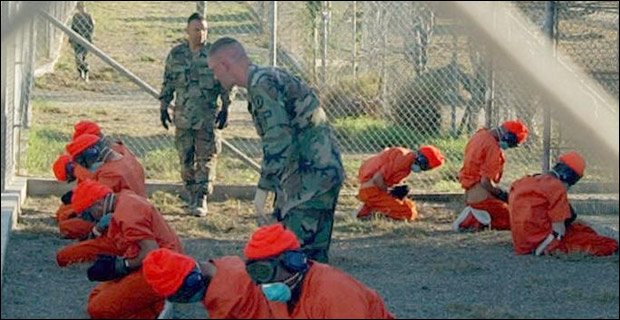
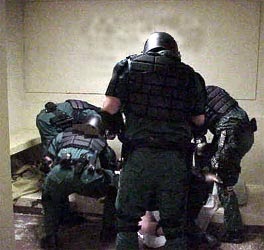
Hi Fred,
ReplyDeleteYes India may be the black swan no one was expecting and yes I had read that their 200 tons of gold wasn't there in India, it's somewhere else :) (maybe JPM is holding it for them). I guess they found out that it was going to take 25 years to get delivery so they might as well lease it. Surprisingly gold is up a little this morning.
They really want to hammer Hastings and kill any investigation. I wonder if they think they are vulnerable somehow.
Sadly we are as bad as the Soviets with Gitmo, hopefully we will keep on a smaller scale but I'm not counting on it. Someone could make a rather large list, death squads in Iraq and who know's where else, false flag chemical attack in Syria, corruption in the government. I'm depressed now, have a great day.
Kev